On the history of the discovery of the Earth’s radiation belts
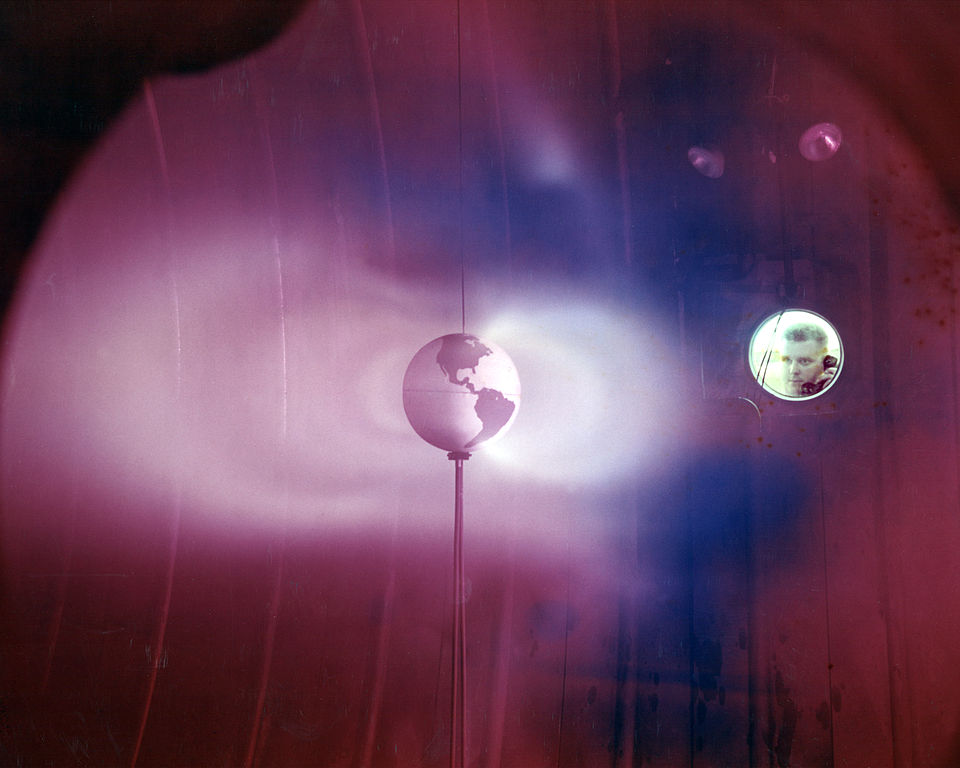
As you know, already the first launches into space gave us a discovery that changed our understanding of the world around us. Speech about the radiation belt of the Earth. According to a common theory, this discovery was made solely thanks to the first American satellite Explorer-I.
There is some truth in this, but the story itself, as often happens, is much more complicated. In this article I will try to reveal it in a little more detail. This is a revised fragment of my book about the "Moon" which I hope will be published.
')

So Explorer-i. Starting February 1, 1958. The total weight (together with the last step) is 14 kg. They were not separated. Orbit 358 for 2550 km.
It is believed that the very interesting fact was discovered for the first time when studying his signals: at a certain height, the registration of charged particles completely stopped, the device "did not see" even the cosmic rays that are always present. What was so strange that originally James Van Allen (the director of the experiment) was told that his equipment was simply banal. But he did not give up and put forward his hypothesis: the level of radiation at those high-rises where the satellite is taken is so high that it leads to a sensor oversaturation.

Explorer-I before building
Subsequently, this hypothesis was confirmed. That was the discovery of the Earth’s radiation belts.
Actually, in this formulation, everything is correct. But there is a small nuance. If you open any articles, then, most likely, you will not find there scientific data transmitted by this very satellite. The link will be to later devices.
What is the matter? To assess how difficult it was to make this assumption, which turned out to be a scientific discovery, one must understand what data were available to the group of scientists involved in the calculations.
Explorer-I was very small. Of course, this was then all that the US could take to space, but it also meant that it had a very, very weak transmitter. If radio amateurs easily received signals from the first Soviet satellite, in the USA they had to build Minitrack stationary posts to receive signals.
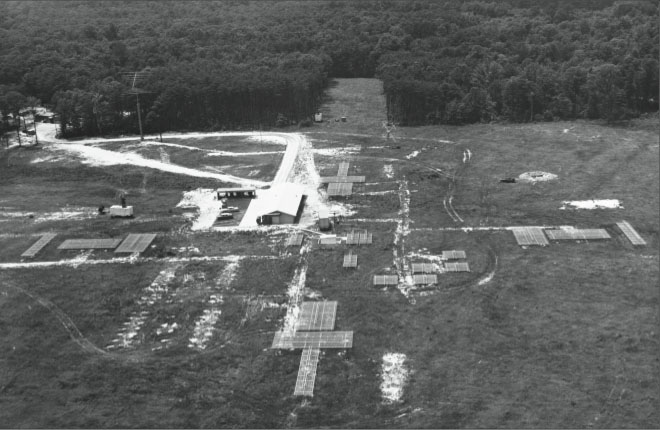
The appearance of the stations. You can see several fields of antennas

Control room
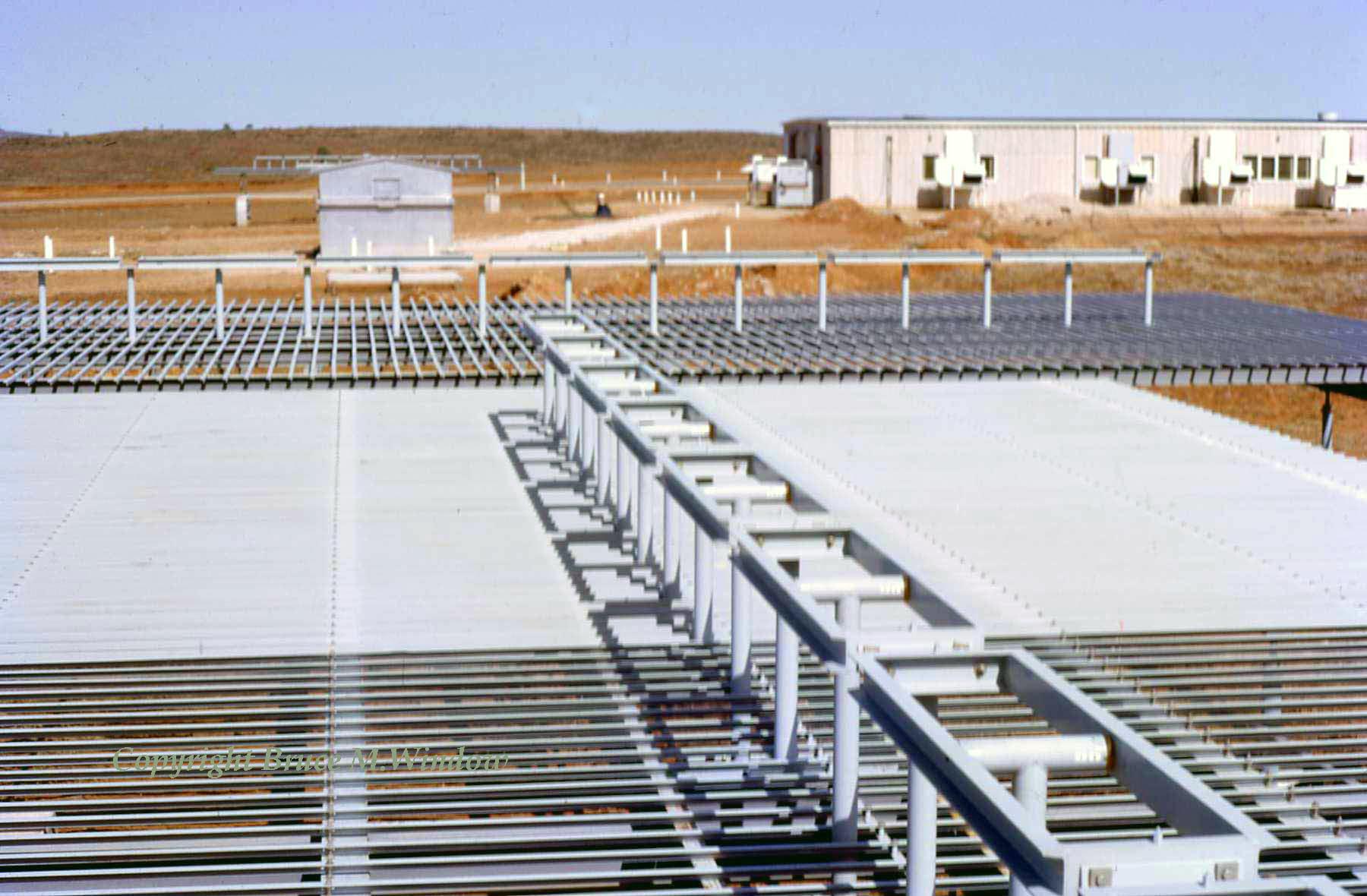
Closeup antenna fragment
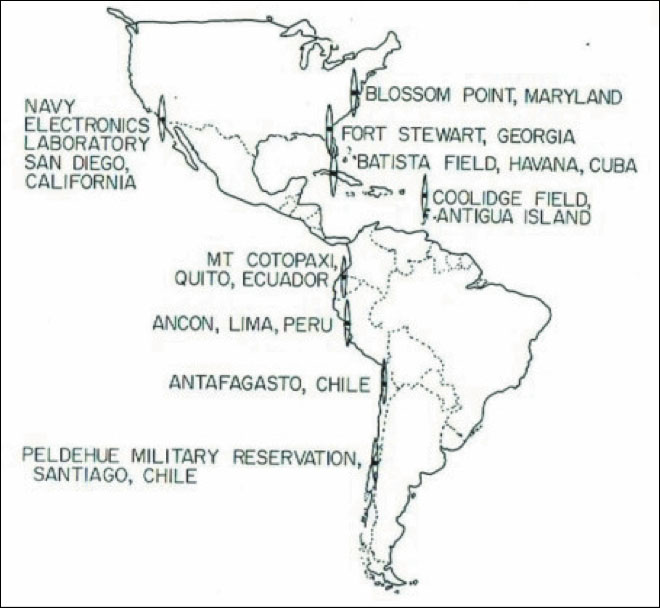
Location of Minitrack stations. Besides them there was another station in Australia.
Minitrack was developed for Avangard, but was used to receive data from both Explorer and the Soviet artificial satellites.
Despite the very high gain, it was difficult to receive a signal from the satellite. There was no tape recorder on the first Explorer, and this meant that the reception could be carried out only on a small portion of the turns.
To obtain a high-quality signal, it is desirable that at the time of passage of such sections the ground receiving station was relatively close, while the satellite itself was well oriented. In itself, such a coincidence of all the conditions at the right time is a rarity, and besides, most of the signals sank in extraneous noise. The 1960 paper explicitly states that most of the signals from Explorer 1 are not processed and it is not clear when it will be, and whether it will be processed.
Half of all telemetry records had a rating of F. Completely unreadable data. The rest were no better.
But what is good in the presence of a used design - you can run more.
On March 5, 1958, the launch of Explorer 2 was scheduled, but it failed - the satellite did not go into orbit. On March 26, Escplorer-3 was sent into space, and this was an important step forward, even though it entered a non-calculated orbit. The scientists removed the equipment for micrometeor research, and instead installed a miniature memory device for recording data during the entire revolution. And Geiger counters were closed with a metal sheet to reduce their sensitivity.
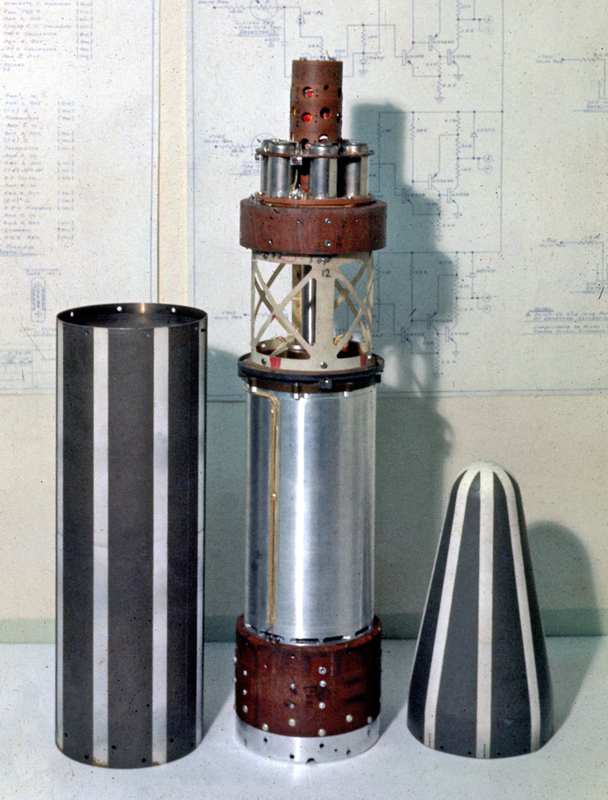
Explorer-III. If you compare with the first device, you can easily notice the sheet for shielding
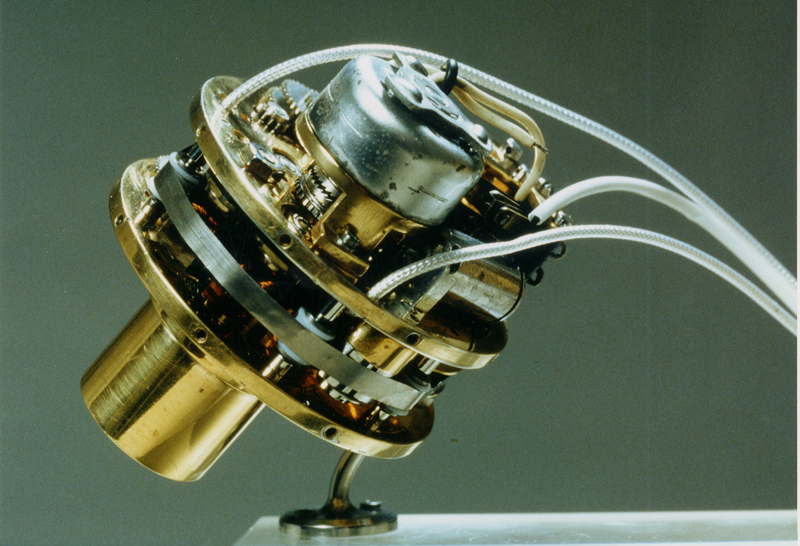
Explorer-III Miniature Tape Recorder
Now it was possible to obtain information about the entire orbit when the satellite passes perigee, in optimal conditions. This is what led to a qualitative breakthrough and after studying this data, a significant discovery was made.
This happened on April 2, 1958. On this day, Van Alenn learned that the first data from Explorer 3 arrived at the NRL processing center. Taking a taxi to the center, he took the printouts there, then looked into a pharmacy to buy graph paper and a ruler. Then he locked himself in the hotel.
“At 3 am, I packed calculations and charts and went home with the conviction that our tools on both Explorers I and III worked properly, but that we met a new mysterious physical effect ,” recalled Van Allen afterwards.
He did not yet know that on the same day, an audio recording of the data for which he had traveled came to his laboratory. His staff MacIlwein, Ray and graduate student Joe Casper immediately began to analyze them. And when he returned, he saw on his chair a note: “Cosmos is radioactive!”
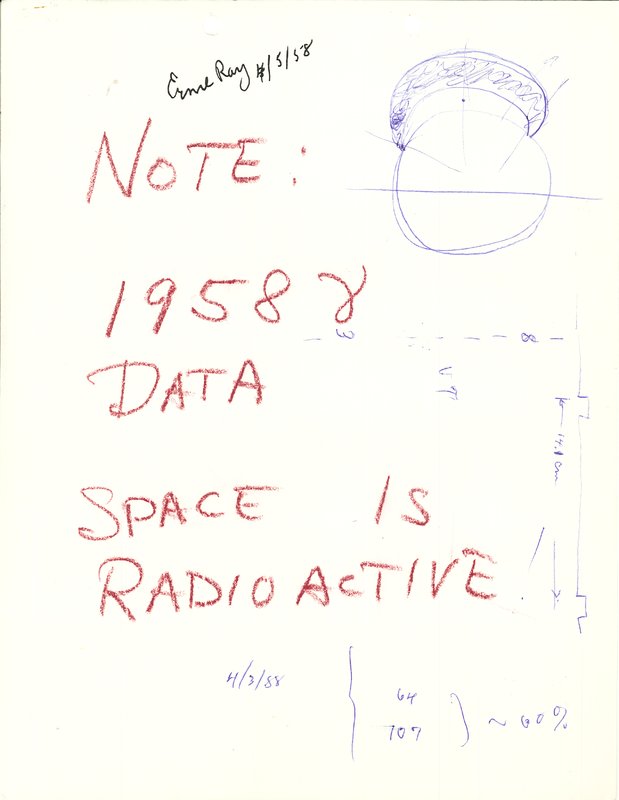
The same note
Of course, Allen later cited data from Explorer-III in his research papers. And formed the first description of the radiation belts. At that time, in the scientific literature, Explorer 1 and Explorer 3 were mentioned next to each other, now they often speak only about the first apparatus, although the second one did the main work in this tandem. Probably, they do it for simplicity, and, perhaps, to heighten the effect: the first American satellite made the first discovery that turned our understanding of space. It sounds!
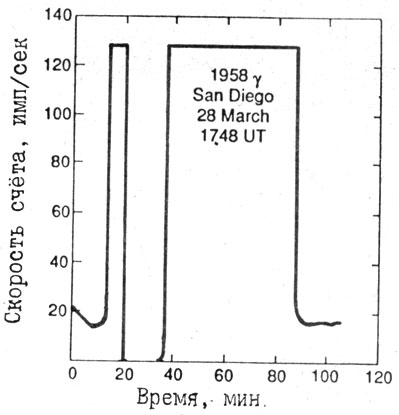
The first record of the Geiger counter readings along the orbit of the Explorer 3 satellite. The decrease in the counting rate of charged particles from zero to the tenth minute is due to the change in the intensity of cosmic rays with latitude, and its constancy from the 15th to the 20th and from the 37th to the 80th minute - the saturation of the registration pattern of its signals. The decline of the testimony to zero from the 20th to the 37th minute indicates that the counter is overloaded with intense flows of charged particles
May 1, 1958, Van Allen spoke at a joint meeting of the National Academy of Sciences and the Physical Society of the United States, where he voiced his theory. And soon she received a weighty confirmation.
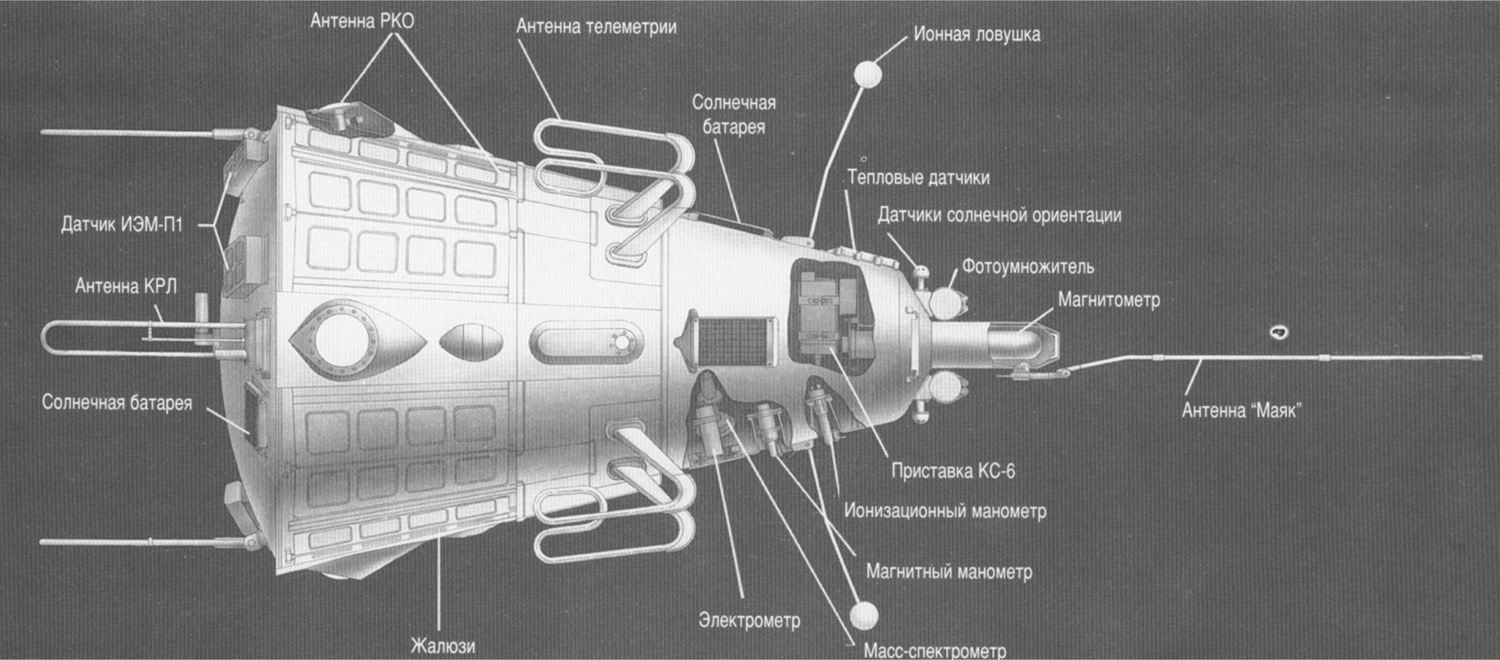
May 15, 1958 - TASS reported that “Sputnik-3” weighing 1327 kg entered Earth orbit. But he was already impressive. Large mass - more sophisticated devices. The data of “Sputnik-3” confidently confirmed the correctness of Van Alain and gave a lot of new information about the radiation belts. But already then the formation of the myth about the success of the American "Explorer" and the failure of the Soviet "Sputnik" began. Here is what the editor of the Times wrote:
"" ... None of the three heavy Russian satellites conveyed messages about Van Allen’s radiation. One explanation is that the Russians outsmarted themselves by refusing to tell the outside world how to interpret the signals from their satellites. Since only the lower parts of the satellite orbits Russian scientists never received data from high altitudes. If some of the Soviet satellites had a memory device, it did not work. Another assumption is that Geiger’s counters were They were loaded near the apogee by Van Allen radiation and the Russian scientists did not know how to explain this unusual behavior. The dog, launched on the second satellite, died about a week later, but the Russians did not tell if it was caused by the radiation effect. It is quite possible that they did not know "".
But, after reading this remark, Van Allen demanded to add the following lines:
“I express substantial disagreement with the section of the article regarding the failures of Soviet researchers in detecting trapped radiation. In my opinion, our work with the Explorer 1 satellite really provided the main discovery, and I made the first public report at the joint session of the American Physical Society and the US National Academy of Sciences on May 1, 1958. Two weeks later, the Soviet satellite Sputnik 3 ", and he provided substantial confirmation of our early results."
It would seem that you can put an end to this. But not everything is so simple. To do this, it is enough to recall that a couple of months before the first Explorer, Sputnik-2 was launched, and it already had all the necessary equipment for fixing radiation. Why did his data not lead to this epoch-making discovery? Didn't he fix anything? As is now known, fixed. So what's the deal?

The SP-65 device on Sputnik-2 had a very complex structure and was originally intended to study solar activity. He had three input devices located at an angle of 120 degrees relative to each other. This was done so that when the vehicle rotates, the Sun could fall into at least one receiver. Moreover, the information from all receivers in telemetry was summarized. Why not? When the Sun hits one of the receivers, it cannot get to the others, which means their data are close to zero and do not affect the overall picture. Moreover, due to the station rotation (the satellite was unoriented, in fact), the data was expected to be received in the form of small bursts at those moments when the Sun fell into the field of action of one of the receivers.
The device was turned on automatically during the passage of the Soviet telemetric stations. Total received nine telemetry fragments. Their decoding has put scientists at a dead end. Yes, sometimes there was a signal from the satellite that was close to what was expected. But most of the information signaled a certain uniform (and very strong) background surrounding the device. This background very smoothly increased or decreased, and there were no correlations with the rotation of the station, as if the sun was shining from all directions. Device failure? Control data testified to his health. Here, someone would exclaim: “Cosmos is radioactive!”, As it was done in the Van Allen team a few months later. Alas, there was no such brave person.
However, it should also be noted here that these were only the first steps. The discovery of radiation belts meant the appearance of a new, truly gigantic field of activity for scientists, scientists still had little idea of its features.
Source: https://habr.com/ru/post/372923/
All Articles